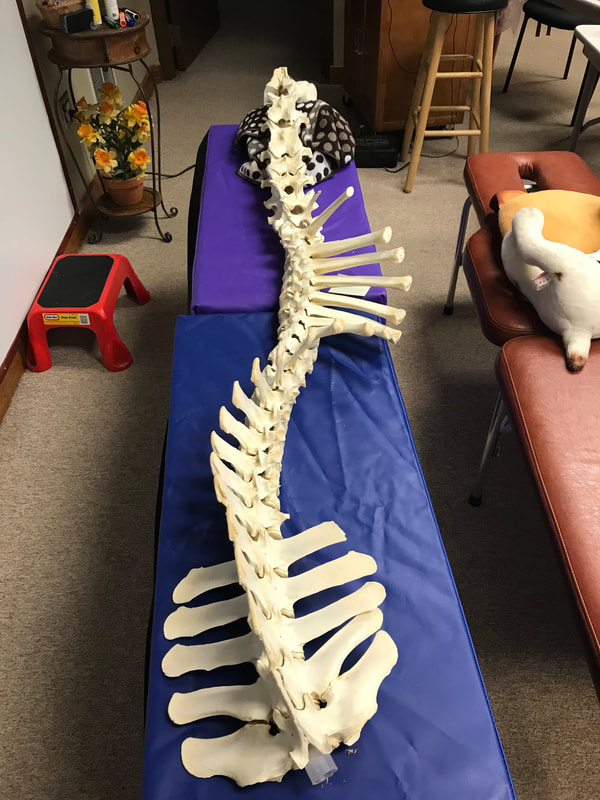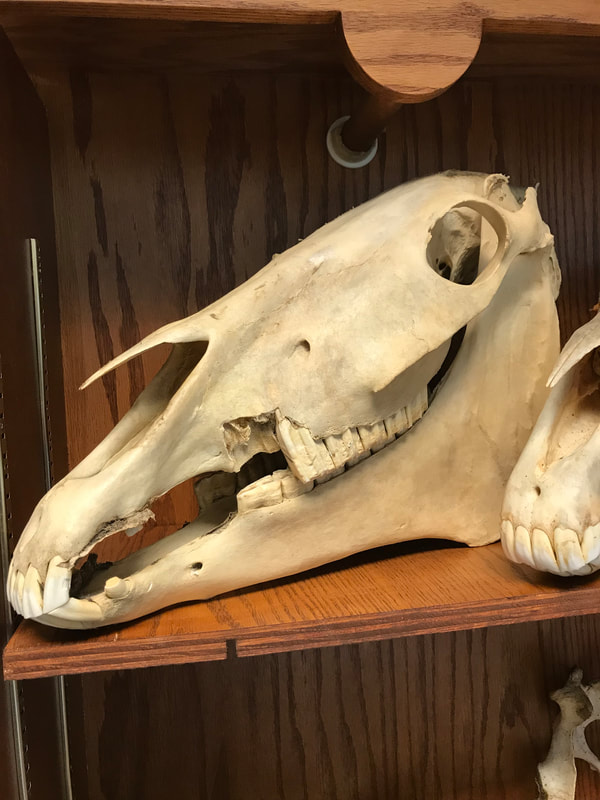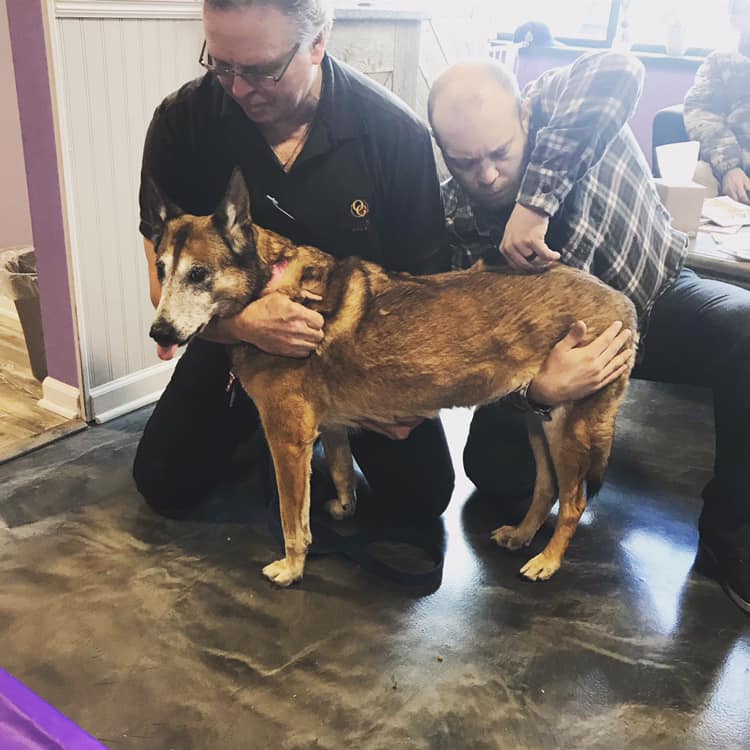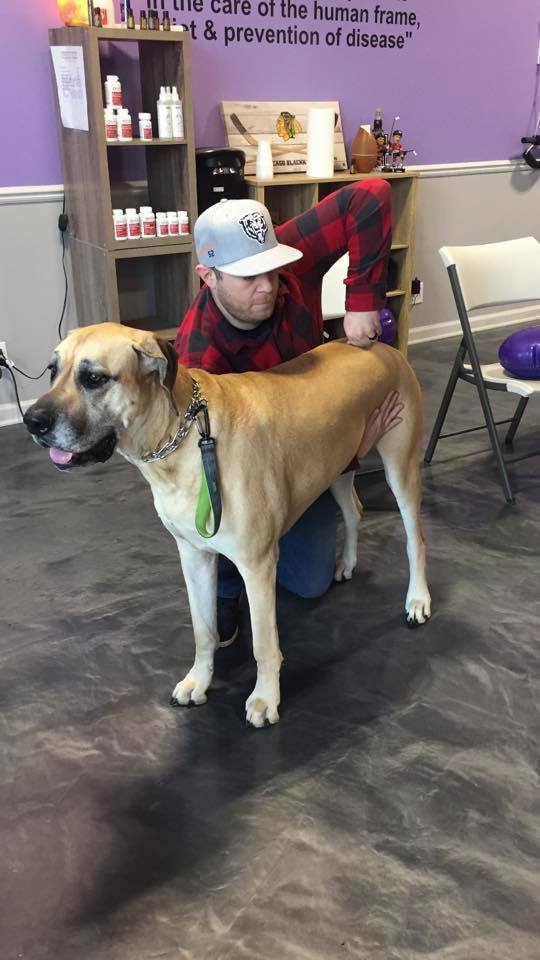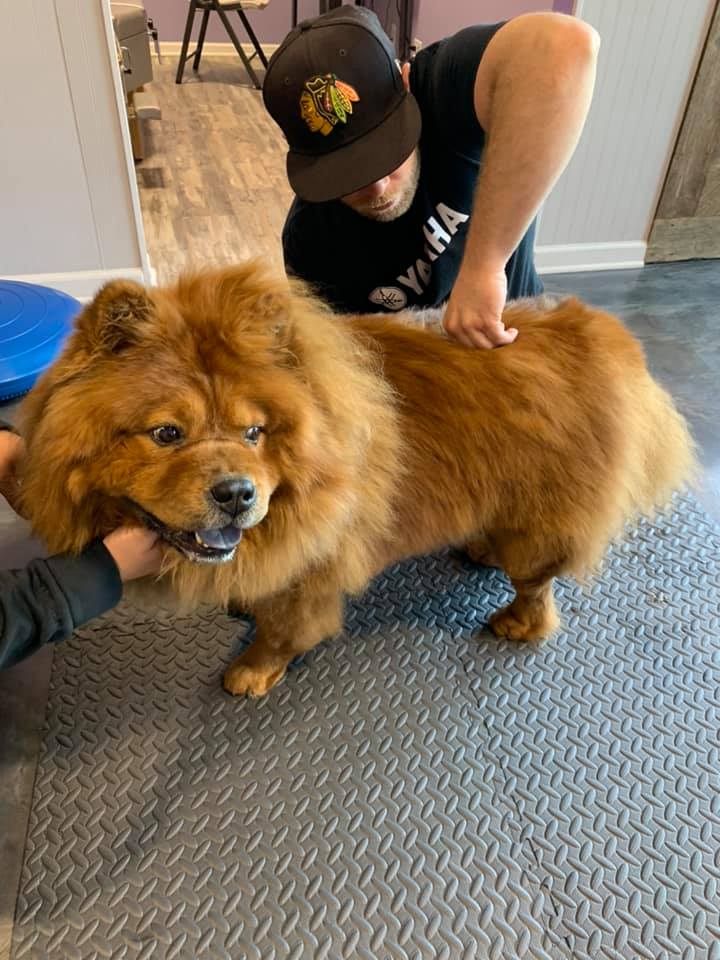All Spines deserve care
At Up North Wellness Center we love our animals as much as we love ourselves- that’s why Dr. Doug completed his classes at Healing Oasis. We were getting so many patients saying gee you helped me out so much, can you help my dog? He has a tough time jumping up on the couch. Or can you help my cat? She stopped using the litter box. Or my horse is refusing to turn or collect. Animals have nervous systems just like humans do. The nervous system is made up of our brain and spinal cord and this is the system that tells the rest of the body what to do. When structural shifts occur in this system, we see animals having a difficult time walking, running, turning their head, and then also having trouble with some of the other systems like the digestive system and even the urinary system.
As an animal chiropractor you are trained to evaluate the nervous system and adjust any areas that indicate the nervous system isn’t functioning properly. Dr. Doug attended Healing Oasis in Sturtevant, Wisconsin which is the only Certified Veterinary Spinal Manipulation school in the country. He evaluates and adjusts all furry and not so furry animals. When your animal’s body is functioning like it should, it heals more effectively, leading to an entirely new level of health. At Up North Wellness Center, our team will work hard to provide state of the art chiropractic care specific to your animal(s)’ needs to ensure a better quality of life.
Below are some of the symptoms animals may have that can be helped with chiropractic adjustments:
Dogs
As an animal chiropractor you are trained to evaluate the nervous system and adjust any areas that indicate the nervous system isn’t functioning properly. Dr. Doug attended Healing Oasis in Sturtevant, Wisconsin which is the only Certified Veterinary Spinal Manipulation school in the country. He evaluates and adjusts all furry and not so furry animals. When your animal’s body is functioning like it should, it heals more effectively, leading to an entirely new level of health. At Up North Wellness Center, our team will work hard to provide state of the art chiropractic care specific to your animal(s)’ needs to ensure a better quality of life.
Below are some of the symptoms animals may have that can be helped with chiropractic adjustments:
Dogs
- Difficulty climbing stairs or jumping
- Difficulty getting up after lying down
- Holding head down when walking
- Shows signs of pain when being pet
- Negative change in attitude
- “Puppy Sitting” “Sloppy sitting” (when sitting the dog’s legs are farther away from the body and off to one side)
- Limping
- Holding their tail down or not wagging their tail
- For agility dogs: performance issues such as knocking down jumps or unwilling to climb dog walk, or even having trouble getting through the tunnel
- Walking in circles when using the bathroom (may be a sign of hip or pelvic imbalance)
- Unusual accidents in the house (not linked to any type of infection or other veterinarian diagnosis)
- Chronic ear infections
- Difficulty jumping
- Stops grooming their hind end
- Cries when being petted
- Negative change in attitude
- Stops using the litter box (not linked to any type of infection or other veterinarian diagnosis)
- Chronic ear infections
- Limping
- Unable or Difficulty in taking a lead
- Bucking
- Pinning Ears when being cinched
- Negative change in attitude
- Unable to collect
- Reduced Performance
- Difficulty engaging the hindquarters
- Difficulty working “long and Low”
- Difficulty flexing the poll
- Shortened stride in one or more legs
- Painful or sensitivity to touch
Process for starting my animal under care
EVALUATION
The evaluation is one of the most important parts of your pet’s chiropractic visit as it involves gathering the history of the animal. The past experiences of an animal, including any physical traumas and/or emotional stress, is helpful in determining how to handle treatment of the animal and what kind of care they may require. If applicable this will also incorporate prior x-rays or laboratory analysis and previous diagnoses and therapies. A thorough chiropractic evaluation includes an examination of the animal prior to an adjustment. This examination involves: posture and gait analysis as well as static and motion palpation
DIAGNOSIS
Information gathered from the case history and the examination will direct Dr. Doug in determining what chiropractic adjustments are necessary. Areas of decreased motion, muscle spasm, inflammation, and possible fluid retention are indicative of what is called vertebral subluxation. Subluxated areas are those that require an adjustment by a chiropractor to restore motion in the joint and increase nervous system firing.
TREATMENT
Subluxated areas receive a high velocity, low amplitude gentle adjustment. The adjustment itself is very low force and very rarely causes any discomfort for the animal.
RESULTS
Usually the normal response to chiropractic care can be immediate improvement within the first 24 to 72 hours. Results are dependent upon multiple variables, including previous traumas (if any), animal age, concurrent diseases, severity of motion restriction, type of work (if any) the animal does, etc. Bottom line is all animals will benefit from chiropractic. If your animal is coming in for protective or wellness care, signals of improvement will be a happier demeanor, less hesitancy to do various movements, improved temperament, and often times more playfulness. A symptomatic animal is easier to note improvements, especially in the first few days to a week and then you may notice a relapse of the initial complaint. Don’t be alarmed this is all part of the healing process and is not unusual, just make note for your chiropractor to help gauge your animal’s rate of response and probable healing time required. Normally after the first 2 or 3 adjustments then most initial relapses are resolved as your animal continues to respond positively.
FOLLOW-UP
A follow-up adjustment may be required in 1 to 4 weeks to continue the healing process. We will talk about this on the initial visit. As your animal improves, follow-up visits may continue to be spread out further. Depending on the activity of your animal, chiropractic checks are recommended to occur once every 4-16 weeks to maintain a state of optimum health. Each animal will have a care plan unique to them, and this will be discussed during your visits.
DISCLAIMER
Animal chiropractic does not dispense medication, perform surgery, inject medications or attempt to replace necessary traditional veterinary care. Underlying pathology should be ruled out prior to an animal chiropractic evaluation. Animal chiropractors are not veterinarians and work in adjunct to traditional veterinary care. If you have any questions, feel free to give us a call at 715-547-4040.
The evaluation is one of the most important parts of your pet’s chiropractic visit as it involves gathering the history of the animal. The past experiences of an animal, including any physical traumas and/or emotional stress, is helpful in determining how to handle treatment of the animal and what kind of care they may require. If applicable this will also incorporate prior x-rays or laboratory analysis and previous diagnoses and therapies. A thorough chiropractic evaluation includes an examination of the animal prior to an adjustment. This examination involves: posture and gait analysis as well as static and motion palpation
DIAGNOSIS
Information gathered from the case history and the examination will direct Dr. Doug in determining what chiropractic adjustments are necessary. Areas of decreased motion, muscle spasm, inflammation, and possible fluid retention are indicative of what is called vertebral subluxation. Subluxated areas are those that require an adjustment by a chiropractor to restore motion in the joint and increase nervous system firing.
TREATMENT
Subluxated areas receive a high velocity, low amplitude gentle adjustment. The adjustment itself is very low force and very rarely causes any discomfort for the animal.
RESULTS
Usually the normal response to chiropractic care can be immediate improvement within the first 24 to 72 hours. Results are dependent upon multiple variables, including previous traumas (if any), animal age, concurrent diseases, severity of motion restriction, type of work (if any) the animal does, etc. Bottom line is all animals will benefit from chiropractic. If your animal is coming in for protective or wellness care, signals of improvement will be a happier demeanor, less hesitancy to do various movements, improved temperament, and often times more playfulness. A symptomatic animal is easier to note improvements, especially in the first few days to a week and then you may notice a relapse of the initial complaint. Don’t be alarmed this is all part of the healing process and is not unusual, just make note for your chiropractor to help gauge your animal’s rate of response and probable healing time required. Normally after the first 2 or 3 adjustments then most initial relapses are resolved as your animal continues to respond positively.
FOLLOW-UP
A follow-up adjustment may be required in 1 to 4 weeks to continue the healing process. We will talk about this on the initial visit. As your animal improves, follow-up visits may continue to be spread out further. Depending on the activity of your animal, chiropractic checks are recommended to occur once every 4-16 weeks to maintain a state of optimum health. Each animal will have a care plan unique to them, and this will be discussed during your visits.
DISCLAIMER
Animal chiropractic does not dispense medication, perform surgery, inject medications or attempt to replace necessary traditional veterinary care. Underlying pathology should be ruled out prior to an animal chiropractic evaluation. Animal chiropractors are not veterinarians and work in adjunct to traditional veterinary care. If you have any questions, feel free to give us a call at 715-547-4040.

